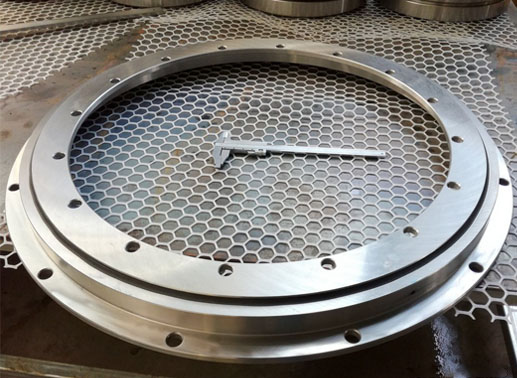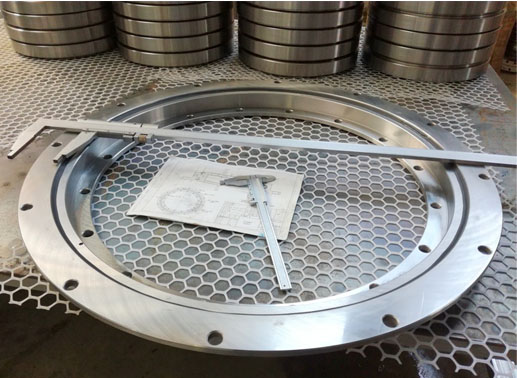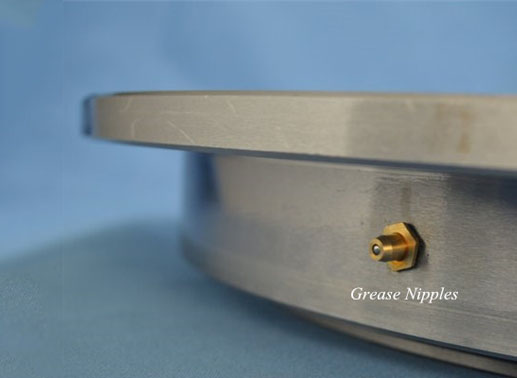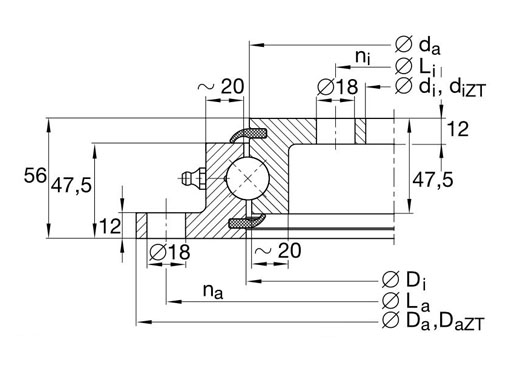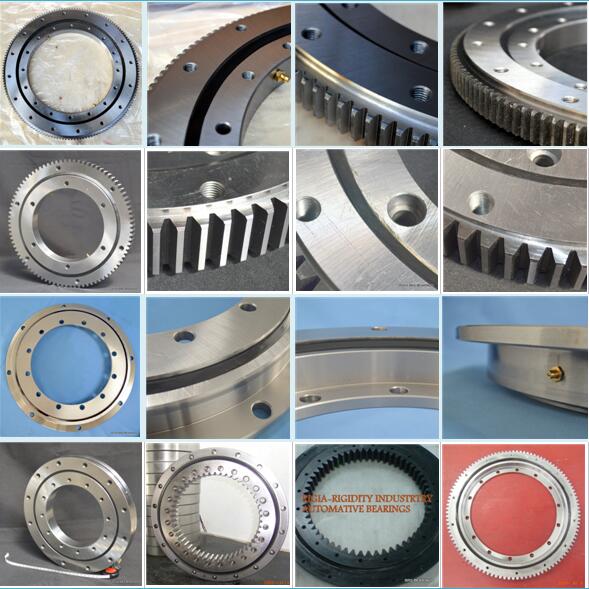-
Part NO.
Open type:VLU200844
-
Dimension
di:734mm
Da:948mm
H:56mm
-
Mounting
Li:762mm
La:920mm
-
Basic Load Ratings
Cr:145kN
Cor:224kN
Ca:222kN
Coa:600kN
-
Equivalent Model
- Features
- Mounting
VLU200844 slewing ring bearing detail specifications:
Rolling Elements Ball Space retainer Yes Material 50Mn/42CrMo/Stainless steel Standard lubrication method Grease lubrication Lubrication hole Yes Sealing NBR sealing at both sides Raceway Hardness HRC 55 ~ 60 Working temperature -25℃ ~ 80℃ Equivalent models:
RKS.23 0841, 90-20 0841/0-37052, L6-33P9Z, 23-0841-01, 230.20.0800.013 Typ 21/950.0, SD.950.20.00.C
VLU200844 four point contact bearings features:
1. Support axial, radial and tilting moment loads.
2. Normal clearance, suitable for light to medium-duty arrangements which require lower accuracy.
3. Easy installation, with mounting holes on both inner and outer ring.
4. Light weight and thin section.
FAQ
1. How to select slewing bearings?
Users shall choose slewing bearings according to many factors such as the accuracy, operating temperature, vibration, rotation speed, sealing, etc. This article provides detailed information on slewing bearings selection.2. I’m designing a prototype, can you produce according to my design?
Yes, BRS can produce custom design based on users requirements, but there will be a MOQ.3. What is the maintenance interval of slewing bearing?
After using the new slewing ring product for 100 working hours, stop the machine and check the bolt pre-tightening torque once. If more than 10% of the bolts are loose, then check again during the 200th working hour. Thereafter check once every 500 working hours after stable operation. If the slewing bearing is in bad working conditions, shorten the inspection interval.VLU200844 slewing ring bearing installation instructions

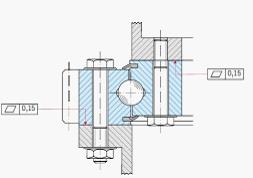
1. Make sure the mounting surface is flat and clean, and free from burrs or
rough edge.
2. The unhardened zone is marked with an “S” on the slewing ring, it must be positioned outside the main load-carrying areas.
3. Commissioning of the slewing ring under sufficient load.

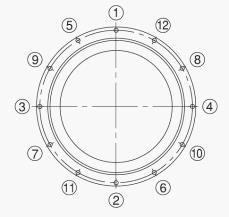
4. Adjust the backlash of gear and recheck it after final tightening of the bearing.
5. Fastening bolts. Place the bearing onto connecting structure and align the screw holes. Screw all the bolts in the holes first and follow the order as shown in diagram when tightening bolts in diagonally opposite sequence. Do not tighten bolts randomly.
6. Check the installation by rotating the assembled bearing arrangement. The torque should not show any excessive variation or “tight spots” during rotation.

